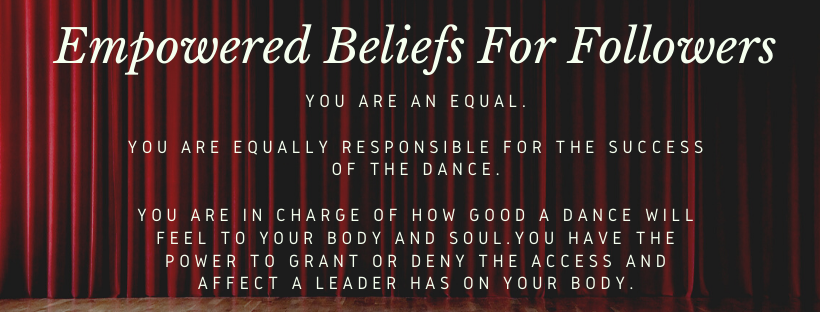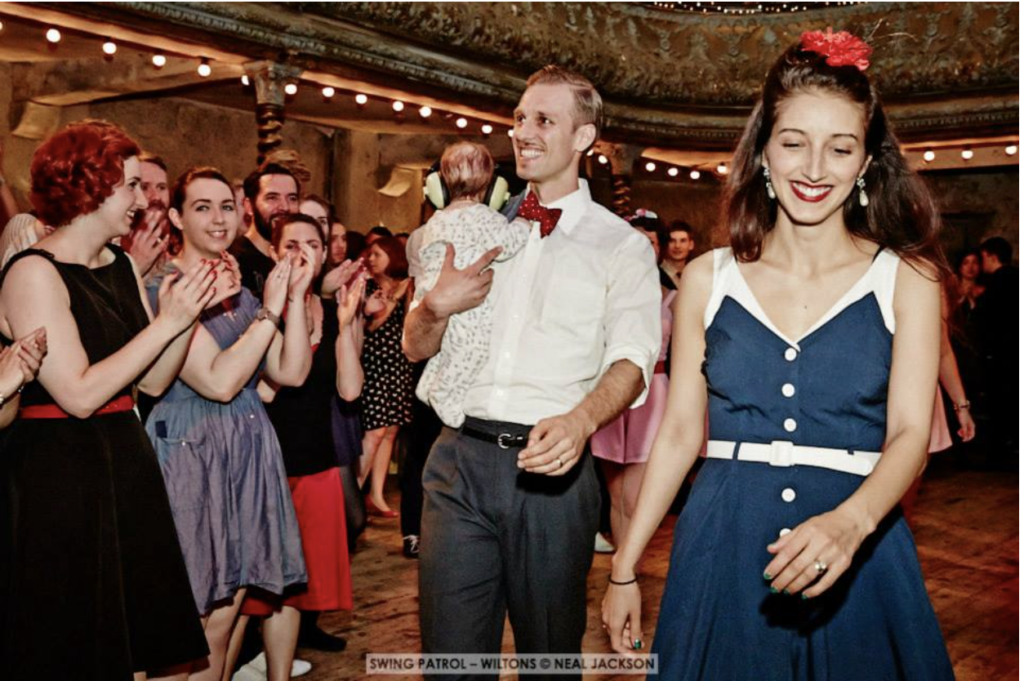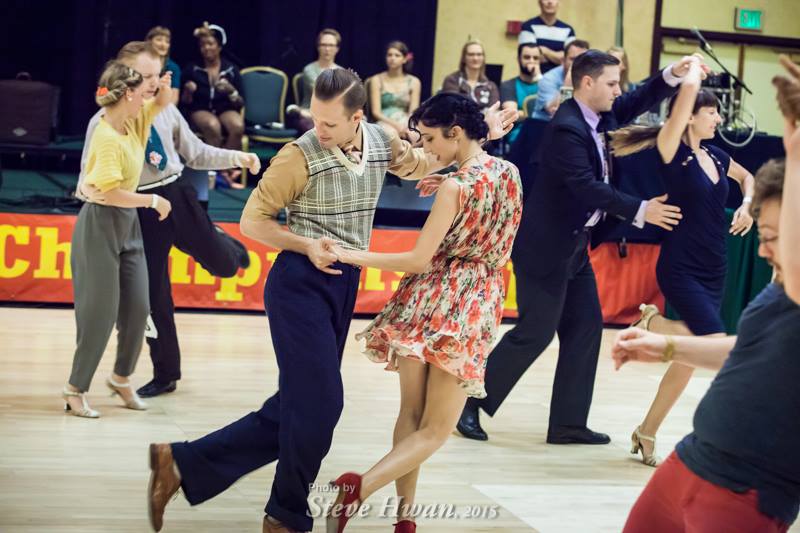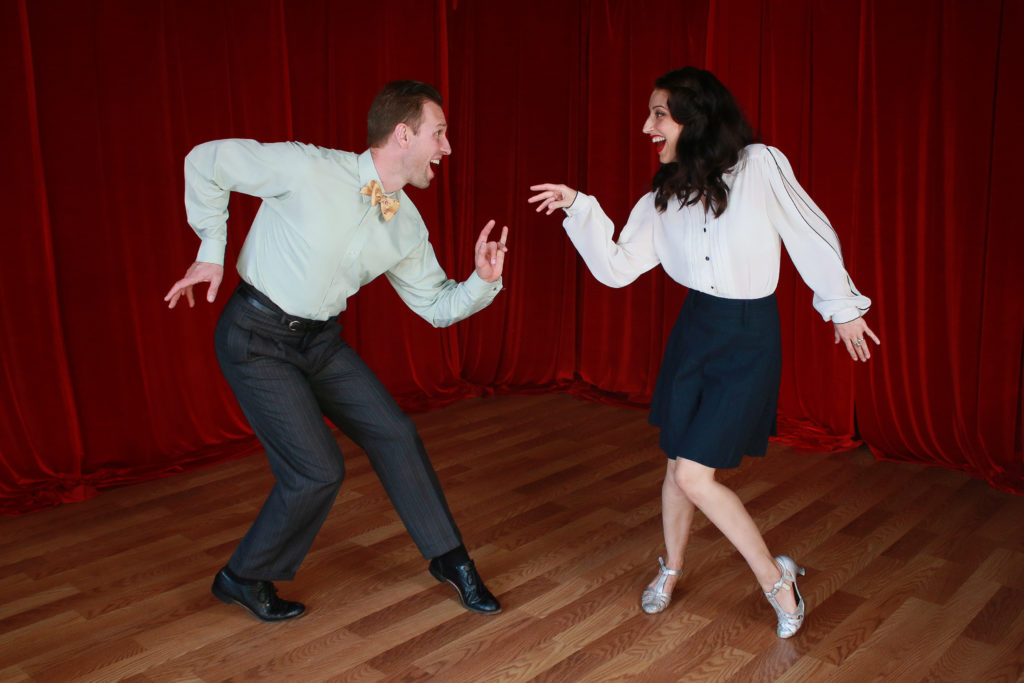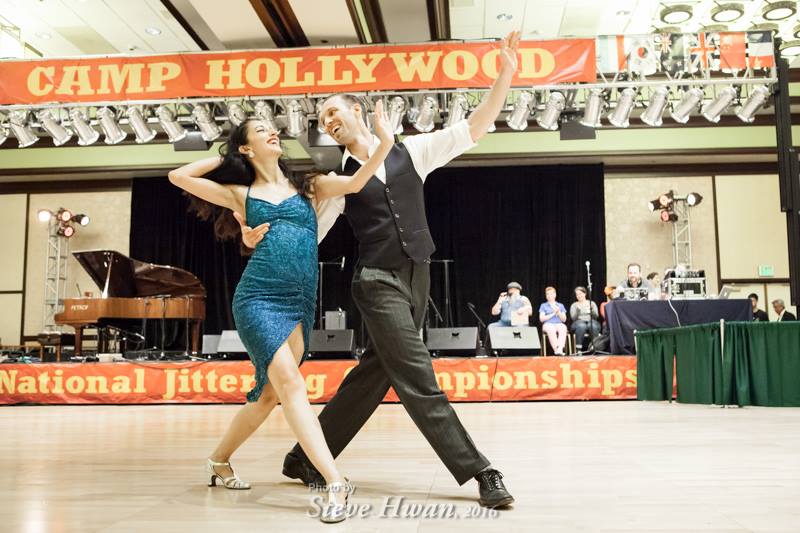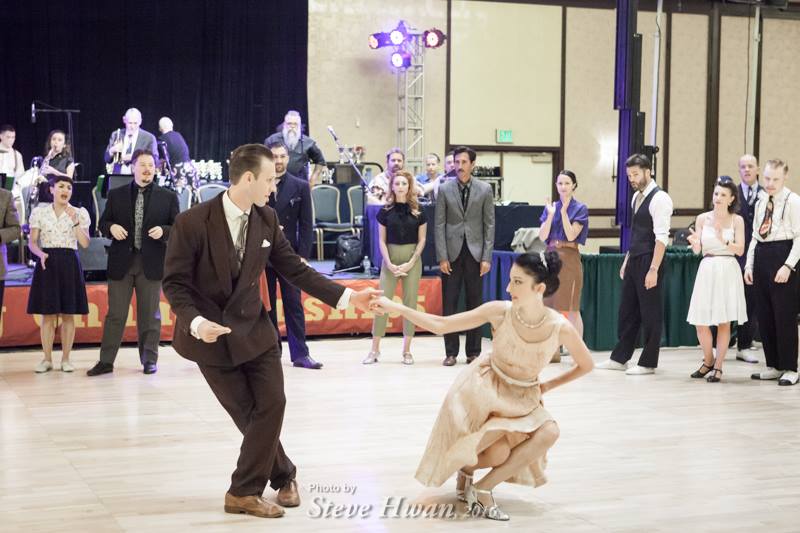Followers: How To Stay Empowered In The Classroom
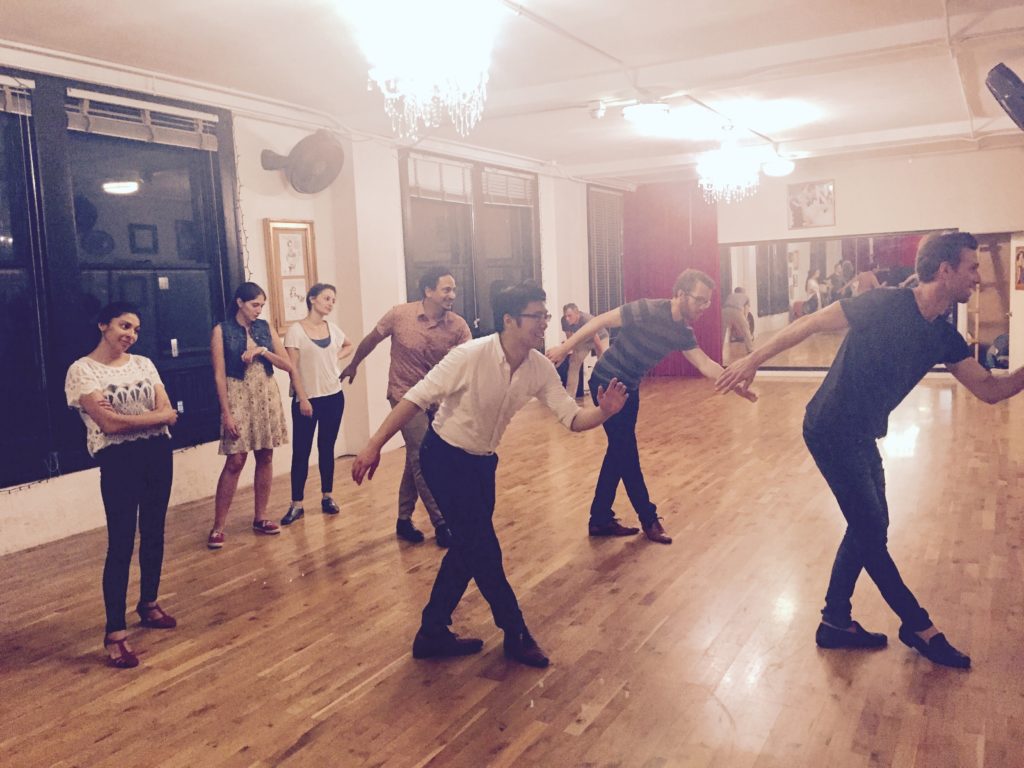

I used to think being a follower could be boring sometimes. The majority of class time was spent teaching the leaders how to do a move while follows were expected to simply do what the Leader leads, or do xyz because that is just what you are supposed to do in Lindy Hop. I had to wait for the teacher to show the leaders what to do and then wait around until it was my turn to “just follow”. The only way to feel challenged, or at least productive, was to be a leader.
Now, to put things in an honest perspective (and a little less dramatic sounding), I was 12 years old and this was the early stages of the Revival in the 90’s. We have come a long way.
I have had a long, emotional, and technical journey to get to a place where I can develop my ideas about a “Follower’s” role free from cultural, social, or past teacher influential experiences. That’s why Dax and I are motivated to be a part of a “follower empowerment” movement in our classrooms and with other fellow instructors. This effort encourages our follower students to embrace the following mindsets:
You are an equal.
You are equally responsible for the success of the dance.
You are in charge of how good a dance will feel to your body and soul.
You have the power to grant or deny the access and affect a leader has on your body.
But how do we stay empowered in class when sometimes teachers don’t facilitate this? In order for you to empower your learning experience with these ideologies, think of your learning classroom experience in this progression:
*Note: There is no specific length of time for each stage. It could take you a few seconds to lock down or it could take the whole class time. Move through (or back and forth) as you feel comfortable.
Stage One: Learning the Solo Body Movement
Learn to move your own body before you move with someone else.
Partnering adds layers and layers of things to think about so you HAVE to know how your own body feels and moves before you even touch someone else. Skipping this step puts you in an environment where it is the leader’s responsibility to tell you how and when you should move your body. This won’t feel very empowering.
If your teacher doesn’t start the class with solo movement or talk about it, take the initiative to learn those movements on your own during any free moment in class (even though it is ideal to happen in the beginning, work with the flow of the class so you are not disruptive). If you are a higher level dancer, you can get a leg up by taking our Swingin’ Body Movement Course and learn the core movements needed for partner dancing. (For those fairly new, you can start to get more comfortable grooving solo with our Getting in the Groove Course). Here’s a way to do this:
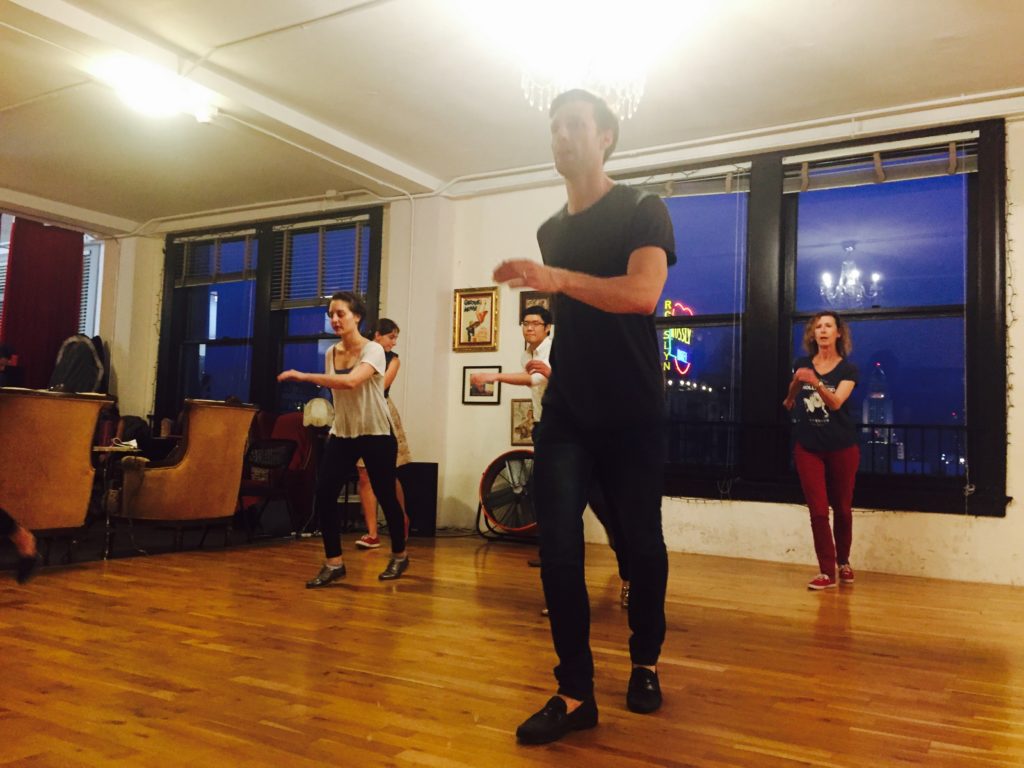 Watch the way your teachers move. Ask yourself questions such as: When and how do their cores change shape? How are they implementing their arms throughout the move? Do they have backward or forwards intentions with that core movement? (*Note: Use your intuition when asking questions. Modify them to fit what you think your teacher will resonate with.)
Watch the way your teachers move. Ask yourself questions such as: When and how do their cores change shape? How are they implementing their arms throughout the move? Do they have backward or forwards intentions with that core movement? (*Note: Use your intuition when asking questions. Modify them to fit what you think your teacher will resonate with.)
I recommend always trying to emulate your teacher’s movement first and then applying your own movements later (even if you may not agree with what the teacher is doing or you feel the teacher is telling you something in contradiction to what they are actually doing.) The way they move has influenced all their ideologies of the dance so it’s worth taking the time to understand.
Developing personal style on other people’s material is a process, and if you rush to do your own thing you might miss a great lesson or misunderstand what they are saying.
Once you got your key moments like, “They shoot their hips back HERE!”, “He twists his upper body HERE!”, review those solo movements as much as you can throughout the class. *Note: make sure to not overload yourself trying to implement everything at once (especially beginners). Observe and try to apply one thing at a time.
Stage Two: Learn The Choreography
Your teacher might be setting up a single move or a whole series of moves that link together. In this stage, you should focus on learning your half of the raw choreography. Focus on the positions and pathways your body will travel through when everything is working well. Be focused on this goal ONLY. The act of “following” is a very different goal and trying to do both at the same time will delay success.
Check out this video on staying focused:
https://www.facebook.com/rhythmjuice/videos/10160036692510385/
In this stage, you are equally responsible to make sure you and your partner get through the move, hitting every mark the teacher demonstrates as well as the general shapes you need to hit. Is the leader not giving you enough momentum on the side pass? No problem, pull off of their body as much as you need to get to where you need to be (note this is different then pulling THEM through space). Is the leader not raising their arm at the timing your teacher wants? No problem, move with great confidence in your timing or talk to the leader if physically doing so would feel socially awkward to you.
A lot of followers are afraid of this step. It goes against all they know about what a “good follower” does. Let it go. Don’t worry about feeling good right now. If you are worried about what the leader might think of you, or if they go so far as to instruct you to “follow more”, being respectfully verbal is your key. Say something like, “Oh I understand. Thanks for trying to help but I am trying to figure out the choreography of the move right now so I’m not super focused on following this round.” Be kind and clear with your expectations and try to understand and respect theirs.
Now that you have your bearings, it’s time to ……
Stage Three: Make it Feel Good
The same expectations of learning choreography from Stage Two apply here, but now you add more information. Now that you know the timing, the shapes, etc., it’s time to add the connection points with the build and release of tension, anchoring, and stretching, etc. This is where things can get frustrating and confusing for Followers. We battle with a lot of inner thoughts that have been ingrained in us from our very first Swing Dance lesson that has left us to feel less than empowered, even when we don’t realize it. After all, the timing and quality of anchoring is the job of the Leader and my job is to react and stretch, right? How far I travel is dependent on how much my leader pulls me through, right? A good follower is not being too light or too heavy, right? A great Follower contributes a lot of ideas to the dance without “messing up” their leader, right?
Nope! With enough technical ability, you can challenge all of these ideologies. Here are two things you can try in the classroom to help you take charge of your learning experience:
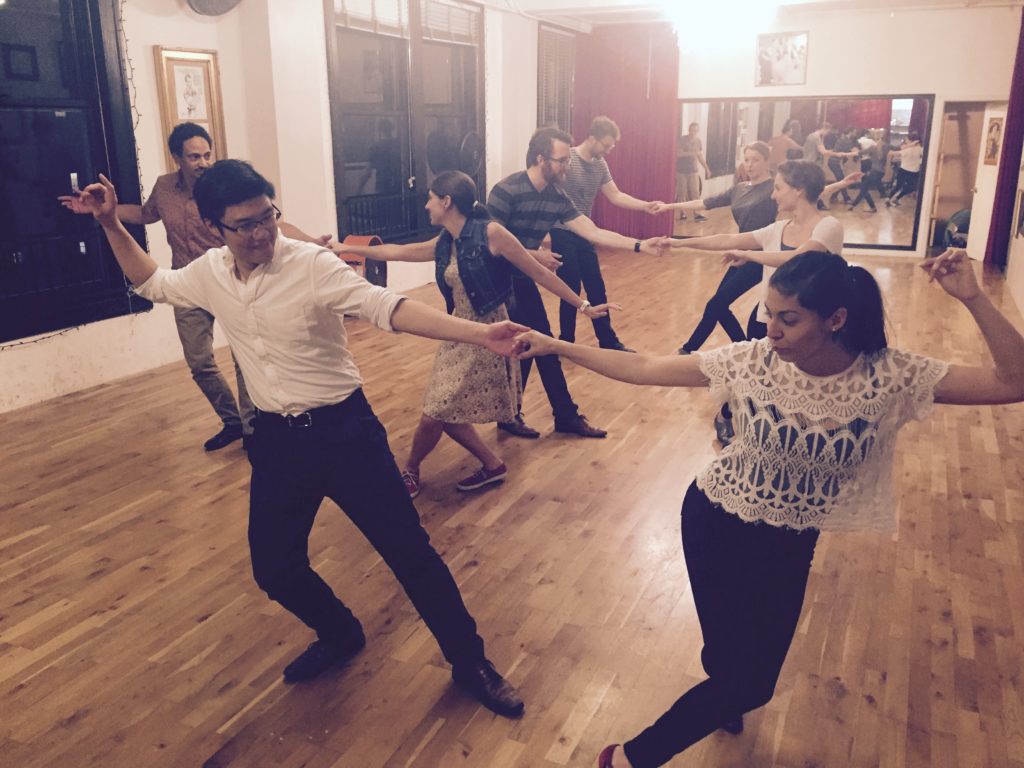
Option 1: Instead of only listening to the teacher, WATCH their bodies in relation to each other. When do they speed up or slow down? When do they travel more? When do they chill out, and when do they add energy? For advanced dancers, you can add questions like: How is all of this happening in relation to what their partner is specifically doing? When do they melt into their shapes? And watch when the couple is “closing the gap” (like moving in the 3-4 position of a Swingout) or creating space (like moving into count 6-7 of a Swingout). Is that space between the chest or between the hips?
You can answer 80% of your questions by just learning how to ask yourself the right question and observe. (Note: if the teacher says something that doesn’t seem to line up with what you observe, they MIGHT be talking about their intention. Many times, especially with partnering, the end result looks different than the initial intention. Both are incredibly important factors in good dancing).
Option 2: When the Leader teacher is telling the leaders what to do to you, imagine they are speaking to you instead. For example, “leaders, lift the left hand upon count 5.” Can be changed to, “our hands need to be lifted on count 5”. “Leaders, push the followers out on 6.” Can be changed to, “I need momentum on count 6”. “Leaders, anchor on count 6.” can switch to, “I need support on count 6”.
How does this re-wording affect things? If the leader is moving your hand too slowly, you can make up the difference. If the leader is not ”pushing” you out in time, you can pull off their bodies to give yourself momentum. If they don’t anchor by count six, you can shorten your arm or travel to the end of the line faster to create your own anchor.
You start to view the dance less about what is being done to you and more about what you need to make it happen.
If this sounds extreme let’s put this in perspective. Why does every pro look good no matter who they are dancing with? What is the purpose of a Pro-Am contest if all Pro-Followers did was “just follow”? And how do they manage to do this while still feeling so good when they dance? Everything I just mentioned is exactly what I do when I social dance. And while, at first, things may feel forced or rough as you are experimenting, it is a necessary step towards refinement. As you develop the skills, it won’t feel like a fight but a collaboration with your partner to make the dance feel awesome.
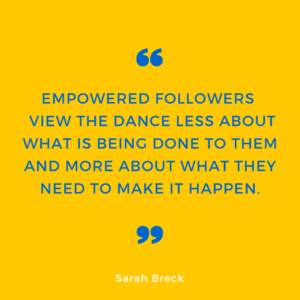
“But shouldn’t I be listening to my partner? Isn’t this a partner dance?”
The last thing I want is for you to feel like Swing Dancing should be about holding hands and “solo” dancing (you can get plenty of solo dance practice done here) or about ignoring leader’s signals. At the same time, when you are in class, you can’t expect the leaders to lead perfectly while they are just trying to figure out where to put their foot on count 3. When you “help them” you’re also doing a number of things that benefit both sides of the partnership.
- You build your muscle memory with high-quality body movement, rhythm, and connection. You are establishing the ideal way it should be FIRST.
- You are also helping them to build their muscle memory. You are showing them the way you want it to feel! “I need more energy here! I need a nice gushy stretch here! I need your arm out of my way here!”
- You might gain more respect for the partnership. If you share responsibility for the dance’s success, you won’t be thinking anymore that you can’t have fun or dance well because of the low level of leads in the class.
- You’re building an important skill for the dance floor: Adjusting. As a high-level dancer, you wouldn’t ask me to “just follow” my leaders. I take what they are trying to do and I make magic (as Dax likes to say), ALL THE TIME.
- You build the necessary knowledge as a foundation for future styling. You need to know your positions, counts, rhythm, ideal shapes, correct body movement, moments of stretch, intention, and momentum. Without this knowledge, you will not have the necessary skills to set up a solid exploratory environment. And feeling restricted in your ability to create is the opposite of feeling empowered. You can read more about this here.
- You are simultaneously learning the beginning steps of leading (or initiating and setting up environments).
Check out more on environments in my facebook chat or my follow-up blog article.
You will also find ALL our new programs have this building of environments integrated into the learning process.
Stage Four: Build Initiating and Responding skills
At this stage, you know how your own body should be moving. You’ve practiced your ideal shapes, flow, footwork, and timing. In other words, you know how to execute the highest quality of dancing you can manage for your level of dancing. It’s time to switch from choreography to real-life scenarios. You can’t expect to have solid muscle memory in one hour, but have some faith in your work so far and switch focus.
You can always go back to earlier stages as many times as you need. For example, let’s say you are working on a tuck turn. You might start practicing body movement with solo hip twists and turns. Then with your partner, you practice the timing of the move but when you get to the part where you add more connection your brain starts to forget all the things you previously worked on! You start to lose your body movement and timing in the quest to work on connection.
Isolate the problem and re-work that a few times and then try again. I am constantly moving forward and backward through these progressions. I know this is easier said than done when you are trying to respect the teacher’s flow but I promise they won’t (or at least shouldn’t!) lecture you if you step to the side for a second to review your solo body movement before re-partnering.
I recommend focusing mostly on the responding skills for now since that is the primary expectation in the scene currently. So this is the point where you need to listen to what your leader is giving you, listen to what your body is telling you, and react accordingly. Also, if the teacher doesn’t tell the leaders to change things up often, you can ask that of your leader. It’s impossible to practice reacting to it’s fullest extent when you know what is about to happen. Use your words and talk about your needs (instead of giving them feedback).
“Can you go between soft and strong? I want to practice matching you.”
“Cool, can we swap the order of the moves or throw some basics in to mix things up?”
And remember! The leaders are in the same struggle as you! You can help them and find empowerment at the same time by saying, “Hey, can we review our solo movement again?” when you see them struggling with their footwork and leading you at the same time.
Tell me your thoughts!
What are your experiences as a follower in a class? What do you do to feel more empowered in your learning experience? Is there a question you have that we did not answer?
*Thanks so much to our fabulous students for being my models in this blog and to Tiffany Hutson for editing <3
